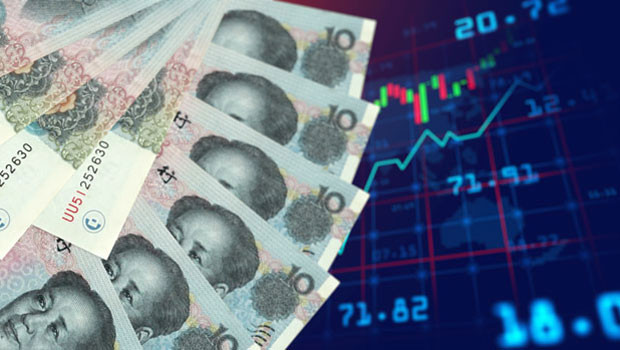Asia report: Stocks mixed amid conflicting China manufacturing data

Asia-Pacific markets finished mixed on Tuesday, the first trading day of the year.
China's stock market declined as manufacturing activity contracted further, while Australia's benchmark index neared its all-time closing high.
"Following a retreat in US stocks last week from their near all-time highs, Asian equities look set to begin the year on a downward bias," said SPI Asset Management managing partner Stephen Innes.
"The recent blip in the US market likely reflects year-end dynamics and perhaps concerns that the street has gotten too far ahead on rate-cut bets."
Innes said traditionally, strains in funding markets heightened at the end of the year as banks reduced activity to bolster balance sheets for regulatory purposes.
"Their withdrawal forces market participants to seek to reduce activity, pare some assets, or face higher funding costs."
Stocks mixed as Japan, New Zealand remain closed
In Japan, markets remained closed in observance of the New Year holiday, with traders in New Zealand also enjoying the second day of their New Year break.
Mainland China saw the Shanghai Composite slip by 0.43% to 2,962.28 and the Shenzhen Component decline by 1.29% to 9,401.35.
Leading the losses in Shanghai was Industrial Bank, down 8.51%; Beijing Piesat Information Technology, off 6.79%; and Hainan Haiqi Transportation Group, which lost 6.25%.
Hong Kong's Hang Seng Index dropped by 1.52% to 16,788.55, with China Resources Beer losing 8.33%, Longfor Properties falling by 7.04%, and Xinyi Solar down 6.36%.
In South Korea, the Kospi index saw a gain of 0.55% to 2,669.81, driven by notable increases in stocks such as Celltrion, up 14.89%, Hanjinkal, up 7.42%, and Kakao, up 6.63%.
Australia's S&P/ASX 200 index showed a modest increase of 0.49% to 7,627.80.
Prominent stocks like Boss Energy, Yancoal Australia, and Whitehaven Coal posted gains of 5.71%, 4.85%, and 4.17%, respectively.
In currency markets, the dollar was last 0.48% stronger on the yen, trading at JPY 141.57, while it decreased 0.14% against the Aussie to AUD 1.4658 and rose 0.23% on the Kiwi to change hands at NZD 1.5846.
On the oil front, Brent crude prices were last up 2.4% on ICE at $78.89 per barrel, while the NYMEX quote for West Texas Intermediate increased 2.37% to $73.35.
China manufacturing data paints mixed picture
In economic news, conflicting reports on China's manufacturing activity in December were at the top of the agenda after the private Caixin manufacturing purchasing managers' index (PMI) showed that manufacturing expanded with a reading of 50.8, slightly up from November's 50.7.
However, the official PMI from the National Bureau of Statistics painted a different picture, reporting a contraction with a reading of 49.0, down from November's 49.4.
A PMI above 50 signifies expansion, while below 50 indicates contraction.
The official data was the third consecutive month of contraction in China's manufacturing, raising the possibility of increased policy support to stimulate the economy.
December's reading of 49.0 was lower than expected and marked the sharpest contraction in manufacturing since June last year.
"In all, the impact of the recent fiscal stimulus is yet to be felt in the economy," said Pantheon Macroeconomics senior China economist Kelvin Lam.
"We are still not seeing the re-construction-related demand filtered through to the manufacturing sector.
"It could be that the harsh wintry conditions in northern China are delaying the post-disastrous rebuilding projects to break ground; we therefore expect construction and manufacturing activity to pick up modestly in spring."
Lam said externally, demand conditions from China's key trading partners - the US and EU - were expected to be sluggish in the near term, thanks to elevated interest rates prevailing in those economies, putting a lid on manufacturing activities in China.
"In any case, the authorities are prioritising structural rebalancing of the economy over sheer GDP growth.
"The benefits of these policies, such as industrial upgrading, will only appear in the longer run.
"We continue to expect China to rely on fiscal policies, mainly through the fixed asset investment channel to stabilise growth, but don't expect bazooka stimulus seen during the GFC."
Elsewhere, Australia's manufacturing sector also faced challenges, experiencing its most significant contraction since May 2020, according to Judo Bank.
The country's manufacturing PMI dropped to 47.6 in December, continuing its ten-month streak of contraction.
It was attributed to weakening demand from the domestic manufacturing sector, with new orders falling for the 13th consecutive month.
That was blamed on soft economic conditions and high interest rates, further exacerbated by subdued foreign demand.
Finally on data, Singapore's economy showed signs of strength in the final quarter of 2023.
Advance estimates from the Ministry of Trade and Industry revealed a year-on-year GDP growth of 2.8%, a substantial increase from the 1% expansion recorded in the third quarter.
On a seasonally adjusted quarter-on-quarter basis, the economy expanded by 1.7%, surpassing the 1.3% growth in the previous quarter.
It marked the fastest growth rate since the third quarter of 2022, suggesting positive momentum for Singapore's economic outlook.
Reporting by Josh White for Sharecast.com.